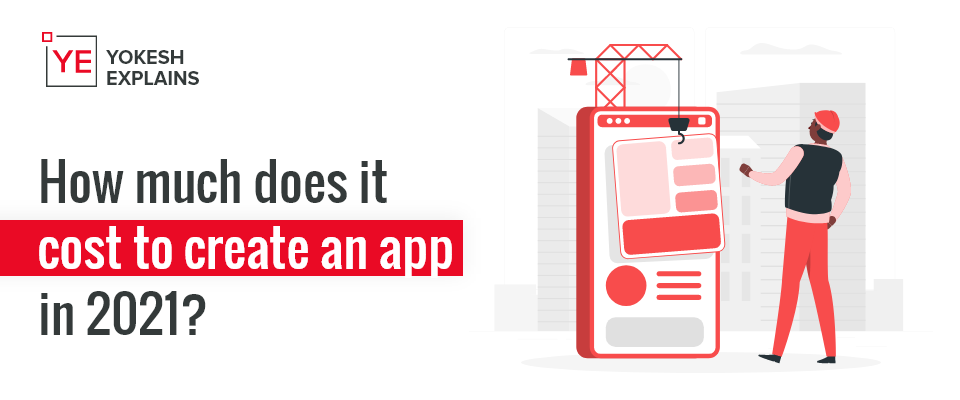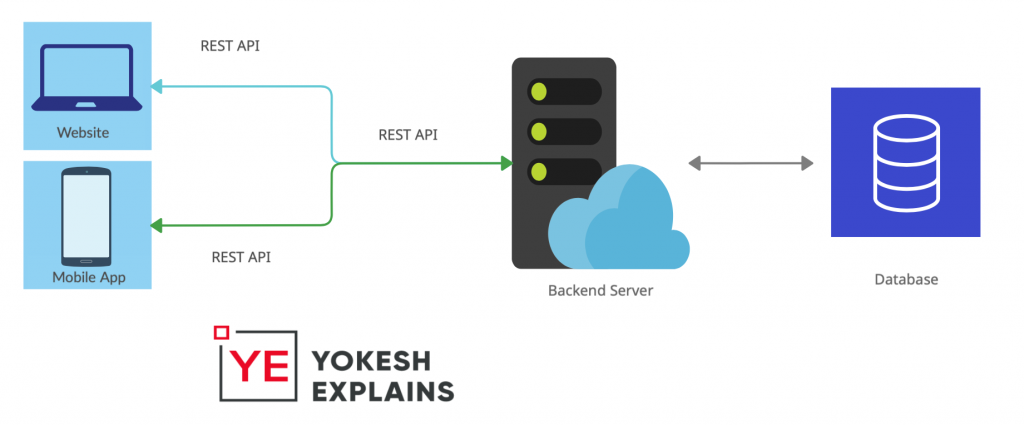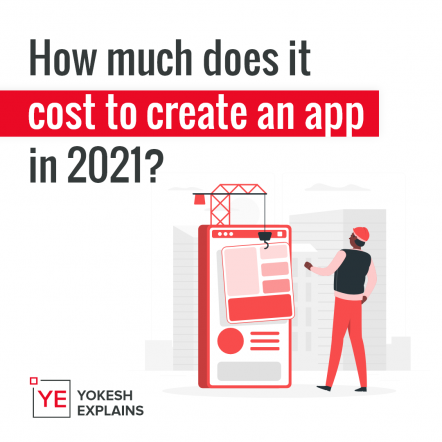I have been a software development consultant for 7+ years now. In this article I have explained all the factors taken into consideration for Mobile App Development Cost calculating. Read through my analysis below and let me know if you have any queries.

There has been a drastic increase in mobile usage in the past decade. Initially, people started using it more as it was pocket friendly, and eventually, most of the possibilities of desktops were brought into the mobile phones. Since then, all websites have started doing mobile app development to give better user experience on mobile platforms. From 2018, Android and IOS established themselves as the leading mobile operating systems. Android being supported on multiple phone manufacturers and IOS only on Apple phones.

Above is a statistical representation of Mobile VS Desktop users. The shift happened around 2015-2016 when the no.of mobile users surpassed the no.of desktop users. This trend keeps going higher and higher each year. Hence, in this competitive market, for your business to reach a majority audience, you will need a mobile application.
Firstly, before getting into the cost of making an app, we need to understand how an app works.
Different types of Mobile Applications
- Native Mobile Applications
- Hybrid Mobile Applications
- Web Apps/PWAs
- Native Mobile Applications
Native Mobile Apps are coded and developed specifically to run on a specific operating system. Coding specifically for a particular operating system opens up a ground full of opportunities to use and explore different aspects of the operating system, right from features to performance.
YES! A Native app is always faster and more stable compared to a hybrid app.
- Hybrid Mobile Applications
A Hybrid app is a mobile application developed on one language supporting multiple platforms like Android, IOS, Mac OS, Windows. Leading hybrid application development languages are React Native (Owned by Facebook) and Flutter (Owned by Google). This might sound like an advantage. But there are disadvantages as well.
Disadvantages:
- Performance is the key problem. You cannot achieve the same performance as in native apps.
- Features – not all features that are possible with native apps are possible in hybrids.
- Look and feel. You cannot achieve the same look and feel with hybrid mobile apps.
Next you need to understand that a mobile app does not work standalone. For complex apps you will need a backend which has all business logics written and a database for storing all data.
Touch Basing with backend:
There are multiple languages for writing backend business logics – php, node js, python, java, to name a few. Performance of your app depends on the language chosen for the backend. You can analyze this with speed/performance of the app you want and the number of concurrent users your app needs to withstand.
The pricing of developers for each backend language differs.
Touch basing with database:
Database is the place where your app/user data is stored. Widely used databases are Mysql, Mongo DB, Cassandra DB, Oracle DB. The speed of your app also depends on speed of read/write operations done on the database
Basic App Architecture:

Other factors considered for mobile app development cost:
- Location – The place where you hire your developers. With location, cost of development differs. For example, if you hire a development team which has developers from the USA – cost will be higher. Instead if you hire developers from India, Poland, or Ukraine, the cost will be comparatively lower as the cost of living differs.
- No. of developers included in the team – For example – 2-5 Android developers for splitting the works into modules which results in faster development. Cost will be applied for each developer.
- UI/UX app screen designing before starting mobile app development services – In this process you will get to know exactly how your app will look like graphically. The complete flow of the app is planned and outlined before development. Companies charge extra for this as a dedicated UI/UX expert designer or a team works on it.
- Quality Analysis Testing – Every app, before releasing to production, needs to be checked and approved. A developer can never be a good tester. He will not have the knowledge to break the system as he is the one who writes the code.
- If your system is complex and you are targeting a very large user-base like amazon, walmart, netflix, you will need a proper advanced server architecture for scaling. For the same you will need a DevOps engineer to architect / manage your servers and deployments.
- Rate differs with the developer’s experience level. A junior developer might be cheaper compared to a senior developer, but the quality of work and time of completion will be good with a senior as compared to a Junior.
- Project Manager – This is the person managing the overall project at the developer’s side and communicating with the client. Pricing for a project manager should be added as well.
Mobile App development cost pricing calculations:
- Hourly costs
- Fixed Budget
- Term contract
1. Hourly costs –
Mobile App development companies have hourly budgets for each sector resource, as we discussed above, and this varies with coding language, years of experience, location, etc. So the mobile app development company will charge you for the hours of work done by each developer, either by end of the week or by end of the month for payout.
For example,
- PHP Laravel developer – $25 per hour
- Android Developer – $40 per hour
- QA Tester – $18 per hour
2. Fixed Budget
In this type, a Fixed cost is finalized and agreed upon by both the client and the software development company for a list of works to be done. In this type of pricing, the payment terms are discussed in percentage.
For example,
- On Project start – 50%
- On project completion – 50%
3. Term contract
In a term contract, a fixed timeline is planned at start and payment is discussed on a monthly basis.
For example,
A $50,000 worth project with $5,000 payment payout each month, for 10 Months. On a term contract, you sign the agreement mentioning the payment for each month and a total timeline.
Things to check before choosing a software development company for your next mobile app development project:
- Speak to the company’s representative directly.
- Check the company’s registration to see if it is a real and valid company. Check their social presence on linkedin/crunchbase/Facebook, etc., if they are active for confirmation.
- Ask the company’s profile and portfolio to learn more about the company and their past works. This is to check their skills and credibility.
- Ask how they are different from others.
- Ask if they have worked on projects similar to yours.
- Checkout the company’s previous client reviews.
- Check if the company signs a development service agreement with all terms mentioned.
A rough estimate calculated for a custom mobile app development project:
Requirement –
- App tech stack – Native Android and IOS apps
- Backend tech stack – JAVA with oracle database
- APP UI/UX – To be created. – 1 month required for it.
- DevOps – Not required during development
- QA Tester – Required
- Project Manager – Required
Price card of the software development company:

- Total project development timeline – 1 year / 12 Months
- Per month working days – 24 (excluding saturday and sunday). So Total working days = 24*12 = 288 working days
- Working hours per day – 8 hours
- Per hour total cost calculation formula – For each tech stack (no.of developers * Hourly cost per developer) * Total working days * Working hours per day
- Total app UI/UX designing cost (suppose designing takes 1 month’s effort)= 1 UI/UX designer * $25 per hour cost * 24 working days * 8 hours per day = $4,800
- The cost for UI/X app screen designing is calculated separately because UI/UX designer will only play a part during the project’s initial stage for a short span of time, and not the entire project.
- Total development cost = {(1 Android developer * $30 per hour cost) + (1 IOS developer * $35 per hour cost) + (1 Java developer * $40 per hour cost) + (1 QA tester * $25 per hour cost) + (1 Project manager developer * $35 per hour cost) } * 288 total working days * 8 hours per day. = =$3,80,160
Total project cost with hourly pricing calculated – $4800 + $3,80,160 = $3,84,960
The software developer will get the payout either in weekly or monthly splits, as per the client’s convenience.
Conclusion:
I hope that by now you would have gained some basic insight on how much your next mobile app development software might cost. If you need a standard quality enterprise-grade application, you will need skilled developers for it. And for that, it is required to invest in the development process, if you want a quality product in the end.
From my experience, I have seen multiple clients wasting time by choosing companies just because they charge low.
Finally, at the end, they get a low quality cheap product which cannot handle large users, with poor coding standards as they might have used inexperienced Junior developers. This becomes of no use after wasting a year of time and money. They restart development from scratch with another company, but by then, the idea becomes obsolete in this competitive world. Hence choosing a good development company in the beginning of a project is essential. It can save you time + money.
All the best on your next project. Contact me for a free 30 mins mobile app development consult. Email – [email protected]






I have been looking everywhere for this! I enjoyed your post. Thank you. You are obviously very knowledgeable. I enjoyed reading this. Stewart Veater
Your article has proven useful to me. This information is magnificent. I have been looking everywhere for this! Your article has proven useful to me. Eloy Harn
Just wanna input that you have a very nice website , I enjoy the style it really stands out. Andrea Duteau
Perfect piece of work you have done, this web site is really cool with superb info . Jeff Pennacchio
You made various good points there. I did a search on the issue and found nearly all people will consent with your blog. Esteban Bredeson